by shipbob.com
Minimum Order Quantity: How to Calculate MOQ for Your Ecommerce Business & Tips on Navigating Them
In the world of ecommerce, inventory is typically a business’s greatest asset. You want to have enough of it so that you can meet demand but not so much that you can’t sell through it.
Purchasing inventory or raw materials isn’t always so simple. Not only do you need to find a manufacturer that sells the right supplies at the right price but also one that allows you to order an optimal amount of units.
Many manufacturers institute a minimum order quantity (MOQ) to get you to commit to buying enough so they can be cost-effective in production and make a profit. It’s why you buy a dozen eggs at once rather than a single egg at a time.
However, your ideal unit count or reorder quantity may not match your manufacturer’s MOQ, which is one of the joys of running an ecommerce business.
Of course, the suppliers you work with may change over time, as will your production runs. Your first 20,000 units may look very different from the inventory of your 1 millionth unit — not just in terms of the physical product itself but your cash flow, profitability, and financial health.
In this article, we’ll give an overview of minimum order quantity, take a look at some vital factors to consider when calculating MOQ requirements, and provide tips on how to make the most of MOQs.
What is minimum order quantity (MOQ)?
Minimum order quantity is the fewest number of units a business wants to sell to a customer at one time. In ecommerce, it’s most often used by a manufacturer or supplier in the context of a production run, though a merchant can put MOQs in place for different types of orders.
A couple examples:
- A supplier’s MOQ may be 1,000 units, meaning you can buy no less than 1,000 units of inventory at a time.
- Similarly, a brand may have an MOQ requirement for wholesale or retail partnerships, where they require a minimum of 50 units or $500 worth of product to be purchased together.
How to calculate minimum order quantity in 4 steps
There is no one right MOQ amount, as many businesses have different requirements. Of course, there is often a tradeoff between having a higher MOQ or paying a higher price per unit. While there isn’t a go-to formula for calculating minimum order quantity, you can use the steps below as a starting point.
1. Determine demand
As a merchant purchasing inventory, demand forecasting takes product type, competition, seasonality, and other factors into account in estimating how many units you will sell. This data can help inform your next purchase order. Inventory forecasting goes hand in hand, to match supply with demand in this equation.
You may find the minimum order quantity wanted from the manufacturer isn’t far off from what you’ll sell through. You’ll also want to account for your total timeline to get the inventory ready to ship, including lead times, freight transit times, warehouse receiving with your third-party logistics service provider (3PL) , and other potential delays, as you may realize you need to order inventory sooner than anticipated.
A few tips on monitoring demand especially during volatile times:
- Be in constant talks with your supplier(s).
- Make sure you have enough safety stock to manage any large fluctuations in demand.
- Review sales forecasts weekly, if not daily, to adjust production quantities.
2. Calculate your break-even point
If you’re trying to establish a minimum order quantity of your own, you’ll need to know your break-even point. This may happen on the second transaction for DTC orders, when you recover the customer acquisition cost and your customer comes back through email marketing efforts.
For wholesale relationships, consider what the lowest per-unit dollar amount you’re willing to charge in exchange for a higher order value. It can’t be so low that your profit margins are next to nothing, but volume discounts are expected if you’re not just paying for smaller quantities at a higher price.
3. Understand your holding costs
Some products are more expensive to store than others (due to size, duration of storage, and special warehousing requirements). It’s financially beneficial to ensure such items are not kept in your inventory for too long.
Your inventory holding cost is the true cost of storing all of your products and something you must consider before investing too heavily in inventory.
4. Come up with your MOQ
Let’s say that you consistently have relatively high demand. Your partners purchase 200 units per order on average, and you need to sell at least 150 units per order to be profitable.
If your partners or customers have been willing to buy 200-unit orders in the past, you could set 200 units per orders as your minimum order quantity, or even go down to 150.
How to make the most of minimum order quantities
MOQ terms may seem awful when you’re on the purchasing side but awesome when you’re on the selling side. Many ecommerce businesses work with manufacturers that have minimum order quantity requirements in place, and some brands will be in the position of implementing their own MOQs through wholesale partnerships or minimum spend thresholds.
No matter where you are, here are some tips on how to work with MOQs.
Incentivize a higher spend on your orders
If you’re getting into wholesale or retail, you can require MOQs for bulk buyers to help ensure retailers pay you a minimum amount. In exchange for a minimum spend, you may choose to offer order volume discounts, where you charge the retailer less per unit in exchange for a higher guaranteed overall spend.
Also, you can adjust the prices to help incentivize higher spend. To do this, you need to set MOQ based on volume or cost. For low-cost items, you need to set a higher MOQ. This ensures you make a profit. For higher-cost items, having lower MOQ works, as the items are already more expensive. Following this strategy helps you make a profit no matter if you sell small or large quantities.
Similarly, you can test this strategy for your direct-to-consumer orders by requiring a minimum amount of products to be sold (e.g., 3 bottles of a beverage each priced at $10 to ensure your order value is at least $30) to cover customer acquisition costs and the cost of goods sold.
You can also try this with a free shipping minimum spend threshold, where you require customers to spend a certain amount of money to qualify for free shipping.
Eliminate slow-moving SKUs
Oftentimes, brands will have more SKUs than they should, and they’ll be stuck paying for storage and doling out cash to fulfill MOQs for products that don’t sell or drive revenue.
Keeping your SKU count simple and minimal helps with inventory forecasting. The difference between 20 and 40 SKUs can be hard enough to manage, let alone managing up to 400 SKUs. It’s easy to overestimate the use of new colors and slight variations in products. A lot of the time for ecommerce store experiences, having more than three options is too much to think about.
“Don’t go crazy with your SKU count. Focus on keeping a catalog small while still being able to increase lifetime value and new sales. For a lot of brands, 3 SKUs make up 50% of sales. You probably don’t need hundreds of products that aren’t driving revenue.”
Ryan Treft, Founder & Partner of Coalatree and Peejamas
Boost inventory turnover
Ordering excess inventory incentivizes you to have a higher inventory turnover ratio, meaning there’s pressure to sell your inventory quicker because you invested more cash upfront. This doesn’t mean only run flash sales to deplete inventory but seek out creative ways to attract and retain customers.
If the minimum order quantity amount is too high and you haven’t proven out your business model or product-market fit yet, it’s best to look elsewhere. Otherwise, you’ll have spent too much money that you may not be able to recover, while also paying for warehousing.
Find other suppliers or distributors
If your manufacturer has a higher MOQ than you’d like, you can always attempt to negotiate with them. There’s no harm in trying! If the manufacturer doesn’t budge and still requires an MOQ that’s too high for you, consider working with a trading company or wholesale distributor, the middlemen who buy in bulk from a manufacturer and resell smaller quantities to others.
Ask other questions
You’re allowed to get creative in your conversations with manufacturers and suppliers. Try rephrasing questions or thinking outside the box:
- See if a manufacturer will let you ‘mix and match’ or order several different products to hit an MOQ, rather than only identical units.
- Ask the manufacturer if they have leftover products from other customers who have canceled orders and thus, don’t require them to produce anything from scratch.
Focus on relationships
It’s possible to start with good terms from a manufacturer, but it becomes even easier over time especially when you build a good relationship with them.
Here’s how it works:
- You sell your manufacturer your vision and get them bought in.
- Your ecommerce business keeps growing.
- Your manufacturer is happy as they keep making money alongside your growth.
- You pay them on time and order more from them.
- Over time, they may offer better terms and be more flexible with you.
“Manufacturers want you to succeed. The last thing they want is for you to go out of business. If you’re not going through inventory or selling it, they have no motivation to help you. Sell the vision of your company, let them see the potential, your creative marketing, and how you’re differentiated. If they believe in your brand, they are not just your supplier, but a partner.”
Sam Lewkowict, Co-Founder & CEO of Black Wolf
We’re all human and want to succeed. Over everything else, remember:
- View it as a partnership and not a transactional relationship. If a manufacturer isn’t willing to work with you, they might be the wrong partner.
- Treat people well no matter what. Partnerships are very important especially right now, in times of a global pandemic.
Successfully implementing minimum order quantity with ShipBob
ShipBob is a leading 3PL that fulfills DTC ecommerce orders and even some B2B ecommerce orders for merchants.
ShipBob’s software, algorithm, and analytics work together to help you make better data-driven decisions to optimize the supply chain.
1. Built-in inventory management
ShipBob offers powerful technology with built-in inventory management software features including the ability to set reorder points for individual SKUs. ShipBob also has a free analytics tool that provides advanced data visualizations, inventory forecasting, real-time inventory counts, and more. Get answers to questions like:
- What were my historical stock levels at any point in time in any location?
- How many days do I have left until a SKU will be out of stock?
- By when do I need to reorder inventory for each product?
- How often is each product sold across channels?
- If I run a sale on my site, how will this affect my available inventory levels?
- How does product demand compare to previous periods?
- How are my sales affected by different seasons and months?
- What are my best-selling items?
- Which items are not generating sales and incurring high ecommerce warehousing fees?
- What is my average storage cost per unit?
- What is the total number of bins/shelves/pallets I’m being charged for?
- And more!
“ShipBob’s analytics dashboard has a lot of valuable reports that show our top-selling states, order revenue and costs, units sold, sales by SKU, days of inventory, SKU velocity, sales vs. inventory distributions showing where our customers are and where we’re shipping from, and more.”
Andrew Hardy, COO of Nature’s Ultra

“ShipBob’s analytics tool is really cool. It helps us a lot with planning inventory reorders, seeing when SKUs are going to run out, and we can even set up email notifications so that we’re alerted when a SKU has less than a certain quantity left. There is a lot of value in their technology.”
Oded Harth, CEO & Co-Founder of MDacne
2. Distributed inventory
ShipBob has a number of warehouses strategically placed across the United States (and even some abroad). We let you distribute your inventory across multiple warehouses to optimize order delivery times and shipping costs. When a customer places an order, it will be picked, packaged, and shipped from the nearest location. The reduction in shipping costs can help offset the higher spend due to MOQ requirements in some cases.

3. Wholesale shipping capabilities
With ShipBob, online store owners can create and manage wholesale orders entirely from one central dashboard. While ShipBob primarily specializes in DTC fulfillment, its B2B fulfillment capabilities are expanding more over time.
Conclusion
One of the biggest barriers to starting a business is the capital required to get up and running. A minimum order quantity may prevent some businesses from working with a manufacturer altogether, but an MOQ can often be better in the long run for some brands rather than buying a smaller batch of inventory at a higher per-unit cost (when you factor in the higher average cost over time as well as freight costs to account for the higher frequency of reorders).
The best minimum order quantity will vary across businesses, and determining the right benchmark requires a lot of research, thoughtful sales planning, and luck. Finding an MOQ that works for you can help you scale your business while keeping it profitable.
To learn how ShipBob can help with fulfillment, storage, and inventory management, click the button below to learn if we’d be a good mutual fit.
Minimum order quantity FAQs
Ecommerce store owners have many questions regarding minimum order quantity requirements, and rightfully so. We’ve provided answers below to some common FAQs.
1. How do you find the minimum order quantity?
There is no standard formula for calculating minimum order quantity. To determine the right MOQ for your business, it’s worth forecasting demand, doing scenario planning, calculating volume discounts, and inventory carrying costs. You can then decide the lowest quantity that works for your business.
2. When should minimum order quantities be applied?
If you are a manufacturer who needs to produce products, then enforcing MOQ terms is important to stabilize your profit margin and make it worthwhile to produce in the first place. Ecommerce businesses that supply products typically sold in sets, such as kitchenware, should also have minimum order quotas through packaging or bundling to increase average order value, and they could also explore MOQs for wholesale partners.
3. What is MOQ in the supply chain?
In the ecommerce supply chain, MOQ is the minimum number of units of a single SKU that a business must purchase from a manufacturer or seller in one production run or purchase order.
4. What is the difference between MOQ and EOQ?
Economic order quantity (EOQ) is an equation used to determine the ideal quantity of inventory to stock in your warehouse so that you don’t spend too much on storage but also don’t run out of products. MOQ is the amount of product a supplier or seller requires a purchaser to buy at one time. An MOQ can cause an ecommerce business to purchase more inventory than they need at one time, causing them to be nowhere near their EOQ.





